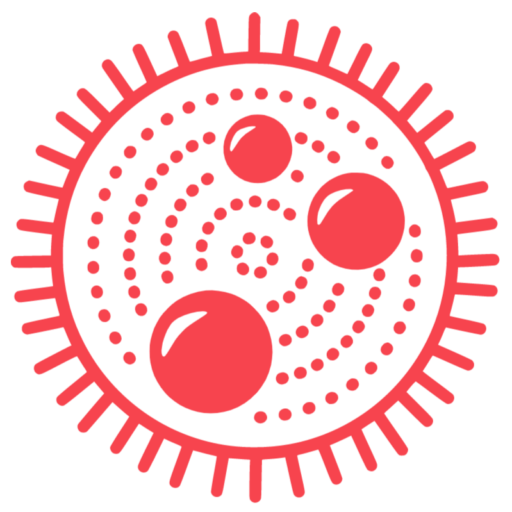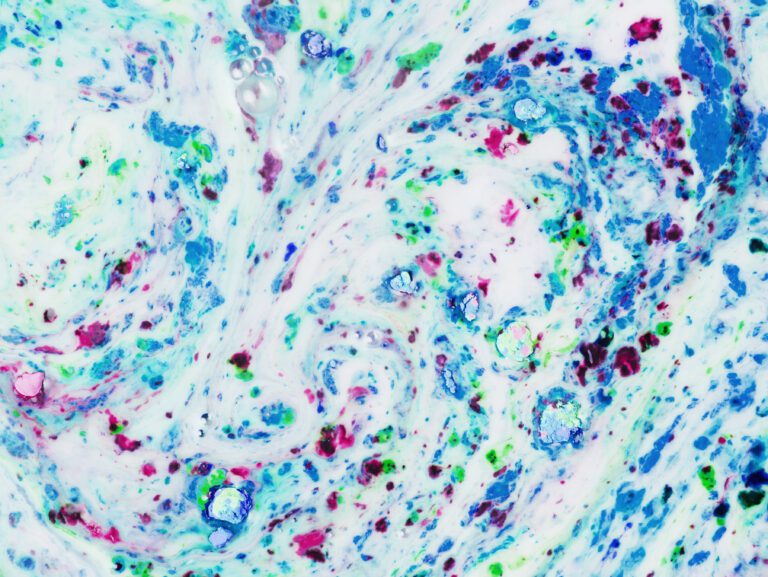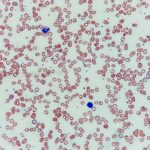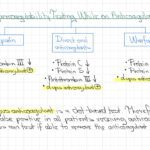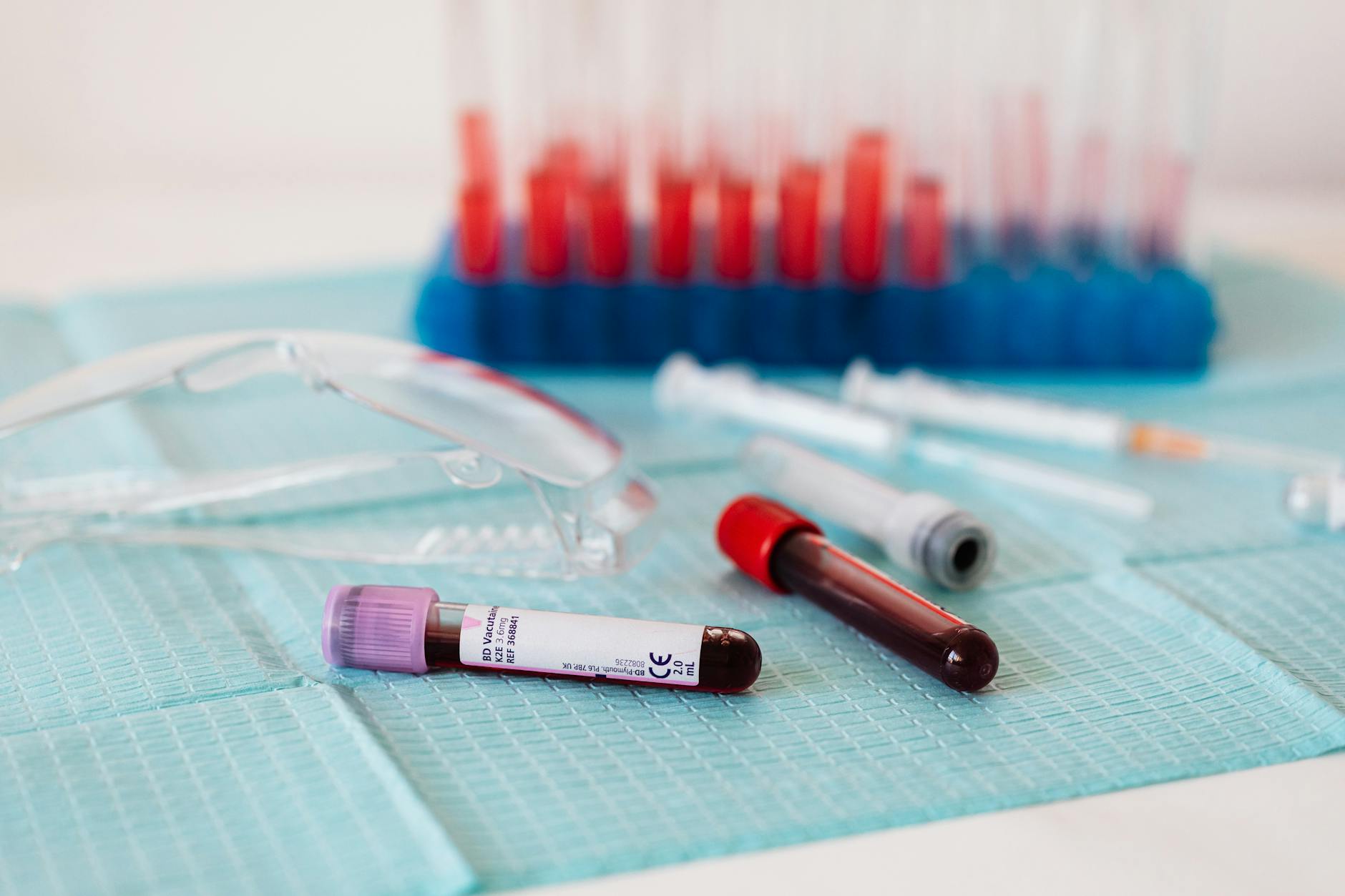
Blood examination is frequently performed in medicine as a clinical tool. Blood is a tissue readily available for analysis and is usually obtained through peripheral veins in the body. Performing blood tests can provide important information used for the investigation of hematologic disorders. Examples of helpful laboratory tests include measurement of blood counts, chemistries, coagulation studies, and many others. In this post, you will find information regarding the most frequently ordered tests in hematology focusing on those used in clinical practice. Of note, a review of a peripheral smear will be discussed in a separate post.
- Complete blood count (CBC) and differential
- General chemistries (focusing on their use in hematology)
- Reticulocyte count (“the bone marrow stress test”)
- Nutritional studies such as iron panel and other vitamins
- Hemolysis evaluation
- Coagulation studies
- Blood bank testing
- Other more specialized tests such as flow cytometry, T cell arrangement testing, and others will be discussed in future posts.
Complete Blood Count (CBC)
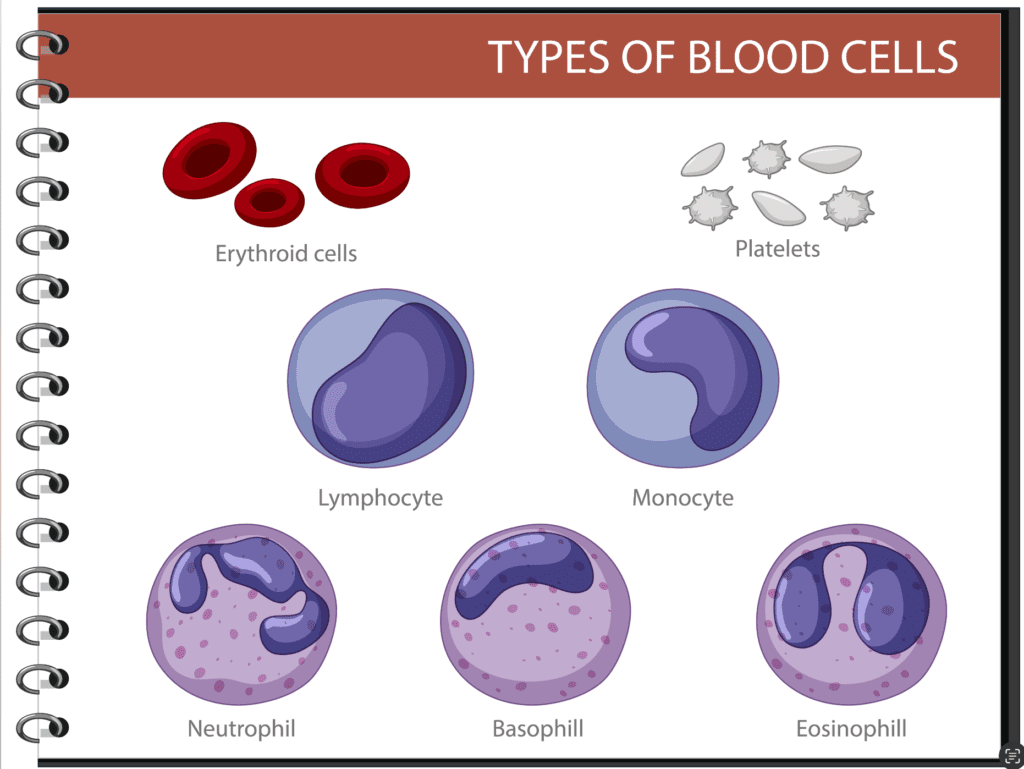
The CBC is the cornerstone test in hematology. In a nutshell, the CBC evaluates the main three cell lines in blood including white blood cells, red blood cells, and platelets. There are multiple measurements included in the CBC for each of the cells that provide information that can help distinguish multiple types of disorders. Of note, a CBC does not always include a “differential” which is the characterization of the different white blood cells in the blood sample unless it is ordered with the CBC or separately (one can order a CBC or a CBC with a differential).
White Blood Cell (WBC) Count
The WBC count measures the number of leukocytes per volume of blood (the normal value is usually 4,500-11,000 cells/mm3). White blood cells are a crucial part of the immune system and play a major role in the body’s defense against infection. There are five main types of white blood cells including neutrophils, lymphocytes, monocytes, eosinophils, and basophils. A CBC with differential needs to be ordered to obtain the measurement of the different WBCs. The table below summarizes the 5 main types of WBCs, their function, and what conditions make them increase or decrease in peripheral blood:
| Leukocyte | Function | Combat Against | Increase (↑) | Decrease (↓) |
|---|---|---|---|---|
| Neutrophils | Phagocytosis and defense against bacteria | Bacterial infections | Bacterial infections, inflammation, stress, steroid use | Chemotherapy/drugs, infections, bone marrow suppression/failure, Duffy-null associated neutropenia |
| Lymphocytes (B, T, and NK cells) | Adaptive immunity, antibody production | Viral infections, neoplasms | Viral infections, immune disorders, chronic infections, lymphoproliferative disorders (e.g. CLL) | Immunosuppressants, HIV/AIDS, bone marrow disorders |
| Monocytes | Phagocytosis, antigen presentation | Chronic infections, inflammation | Chronic infections, inflammatory conditions, autoimmune diseases | Steroid use, bone marrow disorders |
| Eosinophils | Allergic reactions, defense against parasites | Parasitic infections, allergies | Allergic reactions, drugs, parasitic infections, asthma, vasculitis (EGPA and others), adrenal insufficiency | Stress, acute infections, corticosteroid use |
| Basophils | Release of histamine and other chemicals | Allergic reactions, inflammation | Allergic reactions, inflammatory responses, myeloproliferative diseases (e.g. CML) | Stress, allergic reactions, corticosteroid use |
Red Blood Cells (RBC)

The RBC count measures the number of red blood cells per blood volume. RBCs carry oxygen from the lung capillaries and deliver it to the body. RBCs originate from pruripotential stem cells in the bone marrow and their production is stimulated by erythropoietin produced by the kidneys. As they mature, RBCs lose their nuclei and organelles. Reticulocytes are precursors of RBCs that still contain mitochondria and ribosomes (as well as RNA) which makes them blue when compared to the more mature RBCs that are red. Reticulocytes are round and they elongate and obtain their biconcave shape as they advance into a mature RBC. The size of the RBCs is approximately 7 to 8 μm in diameter and undergo extensive deformation as they pass through 3-μm diameter capillaries and the 1-μm wide and 0.5-μm thick endothelial slits in the red pulp of the spleen. The lifespan of mature RBCs is approximately 120 days (4 months).
A CBC includes several RBC measurements that are important to understand and interpret:
- Hemoglobin (Hb): It is the protein in RBCs that binds to oxygen and allows it to be delivered to organs. Therefore, the hemoglobin level reflects the blood’s ability to transport oxygen to tissues. Low levels indicate anemia, while high levels may indicate polycythemia or decreased plasma volume such as in dehydration. Most hematologists use hemoglobin more than hematocrit to assess anemia as the hemoglobin level is less influenced by changes such as volume changes when compared to hematocrit.
- Hematocrit (HCT): It represents the percentage of blood volume occupied by red blood cells. In other words, it describes how many cells there are compared to how much plasma is in the blood. The more cells there are, the more concentrated the blood consistency would be (thick).
- Red blood cell count (RBC#): The RBC count measures the number of red blood cells per blood volume. It is the measurement of the total number of red cells there are per analyzed unit.
- Mean Corpuscular Volume (MCV): It is the measurement of the average volume (size) of red blood cells. It is calculated by dividing the hematocrit by the RBC count. MCV helps classify anemias as microcytic (<80 μm 3), normocytic (80-100), or macrocytic (>100), providing clues to the underlying cause. Think about the average size of all the RBCs measured in a field which expresses if most of the cells are small, normal, or large.
- Red cell distribution width (RDW): It measures the variation in red blood cell size (termed anisocytosis). In contrast to the MCV which gives one the average size of red blood cells, the RDW represents how much variation in size there is when we compare all the RBCs against the others. For example, if the sample contains lots of small and large RBCs, the variation will be larger than if most cells were small. The RDW is mostly affected by nutritional anemias.
- Mean Corpuscular Hemoglobin (MCH): It represents the average amount of hemoglobin per red blood cell. It is calculated by dividing the hemoglobin by the RBC count. It is a measurement of overall hemoglobin content per each red blood cell. Think about how many coins are there in a piggy bank 🐷.
- Mean Corpuscular Hemoglobin Concentration (MCHC): Measurement of the concentration of hemoglobin in red blood cells. It is calculated by dividing the hemoglobin by the hematocrit. In other words, the MCHC describes how much hemoglobin there is according to the cell size. For example, a cell may have normal hemoglobin concentration but less water (dehydration). Therefore, the MCHC would be elevated. The most clear example of an elevated MCHC is hereditary spherocytosis due to RBC membrane loss and cell dehydration. Think about how many coins are there depending on the piggy bank size. A small piggy bank may seem to have more coins than a larger piggy bank even though they have the same amount of coins inside 🐷🐽.
Here is a table that summarizes the RBC parameters analyzed in a CBC:
| Index | Description | High (↑) | Low (↓) |
|---|---|---|---|
| Red Blood Cell Count (RBC#) | Number of red blood cells per volume of blood | Polycythemia: Dehydration, lung disease, high altitude, polycythemia vera | Anemia: Iron deficiency, blood loss, bone marrow disorders |
| Hemoglobin | Protein in red blood cells that carries oxygen | Polycythemia: Dehydration, lung disease, polycythemia vera | Anemia: Iron deficiency, blood loss, bone marrow disorders |
| Hematocrit | Percentage of blood volume occupied by red blood cells | Polycythemia: Dehydration, lung disease, polycythemia vera | Anemia: Iron deficiency, blood loss, bone marrow disorders |
| Mean Corpuscular Volume (MCV) | Average volume or size of red blood cells | Macrocytosis: Folate or B12 deficiency, liver disease, alcoholism, certain medications | Microcytosis: Iron deficiency anemia, thalassemia, lead poisoning, anemia of inflammation |
| Mean Corpuscular Hemoglobin (MCH) | Average amount of hemoglobin per red blood cell (independent of RBC size) | Hyperchromia: Macrocytic anemias, megaloblastic anemia, spherocytosis | Hypochromia: Iron deficiency anemia, thalassemia |
| Mean Corpuscular Hemoglobin Concentration (MCHC) | Average concentration of hemoglobin in red blood cells (depends on RBC size) | Hyperchromia: Hereditary spherocytosis, hemolytic anemias (due to reticulocytosis) | Hypochromia: Iron deficiency anemia, thalassemia, anemia of inflammation |
| Red Cell Distribution Width (RDW) | Variation in size of red blood cells | Increased RDW: Iron deficiency anemia, thalassemia, vitamin B12 or folate deficiency | Decreased RDW: Chronic liver disease, hereditary spherocytosis |
RBCs can also be evaluated by their appearance under the microscope which is part of a peripheral smear review. We will discuss peripheral smear review in another post.
Platelets
Also known as thrombocytes, are small, disc-shaped cell fragments present in the blood. Platelets are formed from hematopoietic stem cells and are initially large cells called megakaryocytes that undergo fragmentation into smaller cells called platelets. Platelets are involved in the process of hemostasis (primary hemostasis), which is the body’s mechanism for preventing and controlling bleeding. Platelets help with the formation of blood clots to seal off damaged blood vessels and tissues to stop bleeding when an injury occurs. Platelets also participate in other physiological processes, including inflammation, immune response, and tissue repair. The platelet count measures the number of platelets per volume of blood. Normal platelet counts typically range between 150,000 and 450,000 platelets per microliter of blood. Abnormalities of platelet counts are quite common and can include the following causes:
- Thrombocytosis (elevated platelet counts): Can be seen in primary hematologic processes such as polycythemia, essential thrombocytosis, etc.; and secondary or reactive to inflammation, iron deficiency, inflammation or infection, certain tumors, splenectomy, and other causes.
- Thrombocytopenia (decreased platelet counts): Has a wide differential diagnosis but is mostly associated with decreased platelet production (e.g., bone marrow disorders), increased platelet destruction (e.g., immune-mediated destruction such as in immune thrombocytopenia, medications), or sequestration (e.g., splenomegaly).
Some of the most helpful platelet indexes include:
- Mean platelet volume (MPV): measurement of the average size of platelets in the blood (it is like the MCV for RBCs). It provides information about platelet production and activation. Increased MPV may indicate increased platelet turnover and activation since platelets are initially created as large cells that undergo fragmentation. A classic example of elevated MPV would be immune thrombocytopenia or ITP in which cells are being destroyed and the body tries to compensate by producing more platelets (giant platelets may be seen on peripheral smears). A decreased MPV may suggest decreased platelet production.
- Platelet distribution width (PDW): It measures the variation in platelet size in the blood. It reflects the heterogeneity of platelet size and can provide information about platelet activation and function. Increased PDW may indicate platelet activation and consumption, while decreased PDW may suggest decreased platelet production or uniform platelet size.
- Immature platelet fraction (IPF): IPF is a measurement of the percentage of immature platelets in the blood. Immature platelets are newly released from the bone marrow and are larger and more reactive than mature platelets. Elevated IPF levels may indicate increased platelet production in response to increased demand or platelet destruction.
As you can note, the three indexes mentioned above have similar causes of their elevation or decrease. Therefore, they can be used in the appropriate clinical context to evaluate the most likely cause of a patient’s thrombocytopenia. If we evaluate a patient in the hospital with thrombocytopenia, having an elevated MPV, PDW, or IPF could point towards a process where there is increased platelet turnover (sepsis, ITP, etc.) versus a bone marrow disorder with decreased production such as a myelodysplastic syndrome.
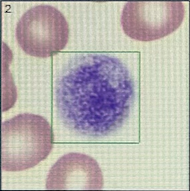
General Chemistries
Assessment of general chemistries includes a metabolic evaluation of electrolytes, renal function, hepatic profile, and metabolic parameters. An example of when evaluating general chemistries is relevant would be the assessment of a patient with anemia in which anemia of chronic renal disease is related to decreased erythropoietin production by the kidneys. Another situation would be when a patient presents with hypercalcemia and anemia which helps in the evaluation of a plasma cell dyscrasia such as myeloma. Electrolyte disturbances can be seen in hemolytic anemias due to cell breakdown and it is important to monitor and correct them to avoid consequences such as cardiac arrhythmias. Furthermore, understanding the baseline renal and liver profiles is important for certain medications.
Reticulocytes the “Bone Marrow Stress Test”
One of my favorite tests in hematology is the reticulocyte count. Reticulocytes are immature red blood cells released from the bone marrow into the blood usually when there is a need for more circulating RBCs. Normally, there are circulating reticulocytes in peripheral blood that express the normal function of the bone marrow in the regeneration of the aging RBCs (normal value is 0.5-1.5% of RBCs or an absolute reticulocyte count of 50-100×109/L). However, an increased reticulocyte count can be seen when there is a loss or destruction of red blood cells in the bloodstream. Therefore, the reticulocyte count can be used as a marker of bone marrow response or “bone marrow stress test.” A normal marrow response to insults such as hemolysis or blood loss should be an increase in reticulocytes to compensate for the RBC loss. However, when the bone marrow is not able to respond adequately such as in bone marrow failure syndromes, the reticulocyte response will not be as expected.
The reticulocyte index (RI) can be used to determine if the response from the bone marrow to anemia is adequate or inadequate as it can be helpful in the differential diagnosis of anemias. The formula to calculate the reticulocyte index is shown below. However, there are many online tools available such as the MDCalc Absolute Reticulocyte Count & Index Calculator where data can be entered and a result obtained.
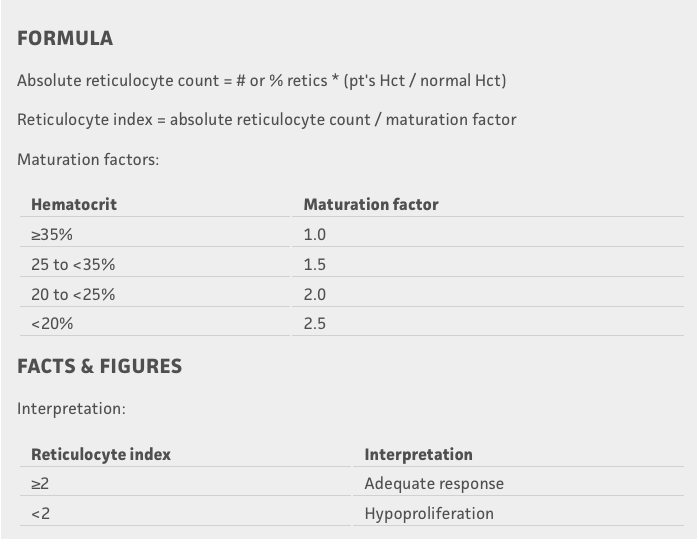
Since reticulocytes still have some mitochondria, and ribosomes with RNA material, they are greyish-blue when seen in a peripheral smear (a term called polychromasia).
Nutritional Studies
Assessment of nutritional causes of blood disorders such as anemia or platelet abnormalities is commonly performed in hematology. Here is a table with a summary of the most frequently used tests:
| Test | Description | When to Test | Low (↓) | High (↑) |
|---|---|---|---|---|
| Iron | Measures the amount of iron in the blood | Suspected iron deficiency/ anemia, anemia of inflammation | Iron deficiency/ anemia, bleeding, malnutrition, malabsorption | Hemochromatosis, liver disease |
| Total Iron Binding Capacity (TIBC) | Measures the total amount of iron that can be bound by transferrin proteins in the blood | Suspected iron deficiency/ anemia, anemia of inflammation | Iron overload disorders, pregnancy | Iron deficiency anemia, chronic disease, malnutrition (think of TIBC truly missing his iron friend) |
| Transferrin Saturation (Tsat) | Calculates the percentage of transferrin saturated with iron | Suspected iron deficiency/ anemia, anemia of inflammation | Iron deficiency anemia, chronic disease, malnutrition | Iron overload disorders, liver disease |
| Ferritin | Reflects iron storage in the body (also an acute phase reactant) | Suspected iron deficiency/ anemia, anemia of inflammation, inflammatory marker | Iron deficiency/ anemia, chronic disease, malnutrition | Inflammation, infection, hemochromatosis, iron overload disorders, inflammation |
| Folate | Measures the level of folate (vitamin B9) in the blood | Suspected folate deficiency with macrocytic anemia | Folate deficiency anemia, malabsorption disorders | Excessive supplementation, liver disease, alcoholism |
| Vitamin B12 (Cobalamin) | Measures the level of vitamin B12 in the blood | Suspected vitamin B12 deficiency with megaloblastic anemia | Vitamin B12 deficiency anemia, pernicious anemia, malabsorption | Liver disease, leukemia, myeloproliferative disorders |
| Methylmalonic Acid (MMA) | Measures the level of methylmalonic acid in the blood (measures possible toxicity from MMA due to B12 deficiency) | Suspected vitamin B12 deficiency anemia | Vitamin B12 deficiency anemia, pernicious anemia | Renal dysfunction |
| Copper | Measures the level of copper in the blood (not done routinely) | Suspected copper deficiency or Wilson’s disease | Copper deficiency, Menkes disease | Wilson’s disease, liver disease, excessive supplementation |
| Zinc | Measures the level of zinc in the blood (not done routinely) | Suspected zinc deficiency | Zinc deficiency, malnutrition, alcoholism | Excessive supplementation, liver disease, renal dysfunction |
We will discuss more about each of these nutritional deficiencies, particularly vitamin B12, folate, and the most common deficiency which is iron deficiency.
Hemolysis Testing
RBCs may suffer destruction which can occur in two places: intravascular (within the blood vessels) or extravascular (usually the hepatic or splenic macrophages). When RBCs are destroyed, certain abnormalities can be seen:
- Anemia: Decreased hemoglobin and hematocrit are usually the first signs noticed that could raise the suspicion of hemolysis. The degree of anemia at presentation can help us understand the chronicity of the hemolysis (for example, if a patient presents with a Hb <6 is likely to have more subacute or chronic hemolysis if there are no significant symptoms or hemodynamic changes that would normally occur with rapid-onset severe anemia).
- Increased reticulocyte count: As we discussed previously, the “bone marrow stress test” will show an adequate response to anemia expressed by an elevated reticulocyte count and index.
- LDH (lactate dehydrogenase) elevation: LDH is an enzyme released from damaged RBCs indicating increased cellular turnover such as in hemolysis.
- Indirect bilirubin elevation: Indirect bilirubin is the unconjugated form of bilirubin produced from the breakdown of heme in red blood cells. Therefore, elevated levels suggest increased RBC destruction.
- Haptoglobin: Haptoglobin is a protein produced by the liver that binds free hemoglobin released from ruptured red blood cells, facilitating its clearance by the reticuloendothelial system of the spleen. The goal of haptoglobin is to bind free hemoglobin in blood to prevent oxidative injury. Decreased haptoglobin levels indicate hemolysis, as haptoglobin is depleted while binding hemoglobin. Importantly, haptoglobin can be decreased in liver disease (as any other protein produced by the liver), recent transfusions (particularly if the RBC unit is stored close to 30 days), and in certain disorders such as myelodysplastic syndrome.
- Coombs test or direct antiglobulin test (DAT): detects antibodies (IgG or complement antibodies antiC3) attached to the surface of red blood cells. The presence of antibodies bound to RBCs points towards an immune-related hemolytic anemia. Therefore, the DAT or Coombs test is important in classifying hemolytic anemias into immune and non-immune. It’s crucial in diagnosing immune-mediated hemolytic anemias, including autoimmune hemolytic anemia and hemolytic disease of the newborn. A positive Coombs test indicates the presence of these antibodies or complement proteins, which can lead to premature destruction of red blood cells by the immune system.
There is no single test that confirms or rules out hemolysis and the tests can be used in conjunction with the clinical presentation of the patient.
Coagulation Studies
Testing for coagulation disorders such as bleeding or clotting is crucial in hematology, particularly for classical hematologists. The most frequently used tests to evaluate patients with bleeding disorders are:
- Bleeding Time: Measures the time taken for bleeding to stop after a standardized skin incision. It assesses platelet function and primary hemostasis. This test is not performed anymore in clinical practice.
- Prothrombin Time (PT): Evaluates the extrinsic and common pathways of coagulation by assessing the time taken for blood to clot after the addition of tissue factor. It evaluates factors I (fibrinogen), II, V, VII, and X. PT prolongation can occur in vitamin K deficiency, liver disease, warfarin use, and the use of heparin or direct oral anticoagulants due to their effect in factor Xa.
- Activated Partial Thromboplastin Time (aPTT): Measures the intrinsic and common pathways of coagulation by assessing the time taken for blood to clot after the addition of phospholipids and an activator. It evaluates factors I (fibrinogen), II, V, VIII, IX, X, XI, and XII. Isolated aPTT prolongation can be seen mostly in patients with deficiency or inhibitors of the hemophilia factors VIII, IX, and XI.
- Fibrinogen: Measures fibrinogen, a protein essential for blood clot formation. Low levels may indicate hypofibrinogenemia/dysfibrinogenemia which can be acquired (for example in liver disease) or congenital, while high levels can occur in inflammatory states.
- Mixing Study: A key test to perform when there is a prolongation of PT or aPTT (mostly done for aPTT prolongation in clinical practice) to differentiate between a clotting factor deficiency vs an inhibitor. In a mixing study, the patient’s plasma is mixed with normal plasma (which provides adequate levels of clotting factors that correct any deficiency) correcting factor deficiencies by completely correcting a prolonged aPTT which does not occur in the presence of an inhibitor (usually an antibody that binds and blocks the activity of clotting factors).
- Clotting Factor Levels: Individual assays quantify specific clotting factors to assess deficiencies or abnormalities contributing to coagulopathies can be performed depending on the clinical presentation and pattern of coagulation abnormalities (prolongation of PT, aPTT, and others). Von Willebrand factor levels and other special tests can also be performed and will be discussed separately.
- Inhibitors: Tests to measure the titer of an inhibitor can be performed. These tests assess the presence of antibodies (or inhibitors) that interfere with normal clotting factor function, often seen in acquired hemophilia or inhibitors to factor VIII. One of the most common tests is the Bethesda titer.
- Thrombin Time (TT): Thrombin time assesses the conversion of fibrinogen to fibrin stimulated by thrombin. It measures the time taken for fibrin clot formation after adding thrombin to plasma. TT is particularly useful in evaluating fibrinogen abnormalities and detecting dysfibrinogenemia, argatroban therapy, and certain coagulation factor deficiencies.
- Platelet Function Assays: These tests assess platelet function and aggregation, providing an understanding of platelet disorders and the risk of bleeding or thrombosis. Examples include platelet aggregometry, PFA-100 (platelet function analyzer), and others.
There are other tests used to evaluate patients with thrombotic disorders including:
- D-dimer: D-dimer is a degradation product of cross-linked fibrin. It is elevated in conditions associated with thrombus formation and degradation, such as deep vein thrombosis (DVT) and pulmonary embolism (PE). It is often used as a marker to rule out thrombotic events when clinical suspicion is low (such as complementary to the Wells Criteria), as elevated levels suggest ongoing fibrinolysis or another cause such as certain infections or inflammation.
- Anti-Xa assay: This test measures the activity of factor Xa inhibitors, such as heparin and low-molecular-weight heparin (LMWH) in the blood. It is used to monitor and adjust the dosage of these anticoagulants in patients receiving treatment to prevent or treat thromboembolic events and is more reliable than aPTT in most conditions.
- Fibrin Degradation Products (FDPs): FDPs are small protein fragments released into the bloodstream during fibrinolysis or fibrin clot breakdown. Elevated levels of FDPs indicate ongoing fibrinolysis and are seen in conditions such as disseminated intravascular coagulation (DIC) and thrombotic microangiopathies.
- Hypercoagulability or thrombophilia testing: Depending on the clinical presentation, thrombophilia or hypercoagulability testing may be considered and performed in the evaluation of thrombotic disorders. The 5 most frequently tested hereditary conditions include prothrombin mutation, factor V Leyden deficiency, protein C deficiency, protein S deficiency, and antithrombin deficiency.
- Antiphospholipid syndrome testing (APLS): When concerns are raised for antiphospholipid syndrome such as obstetric complications (multiple miscarriages, etc.) or venous/arterial thrombosis and others, testing for APLS can be performed. There are three main tests considered including the lupus anticoagulant, anticardiolipin antibodies, and beta-2 glycoprotein 1 antibodies.
Hemostasis and thrombosis are fascinating areas of hematology and we will be discussing more about testing and other aspects of the care of patients with disorders in these areas in future posts.
Blood Bank Testing
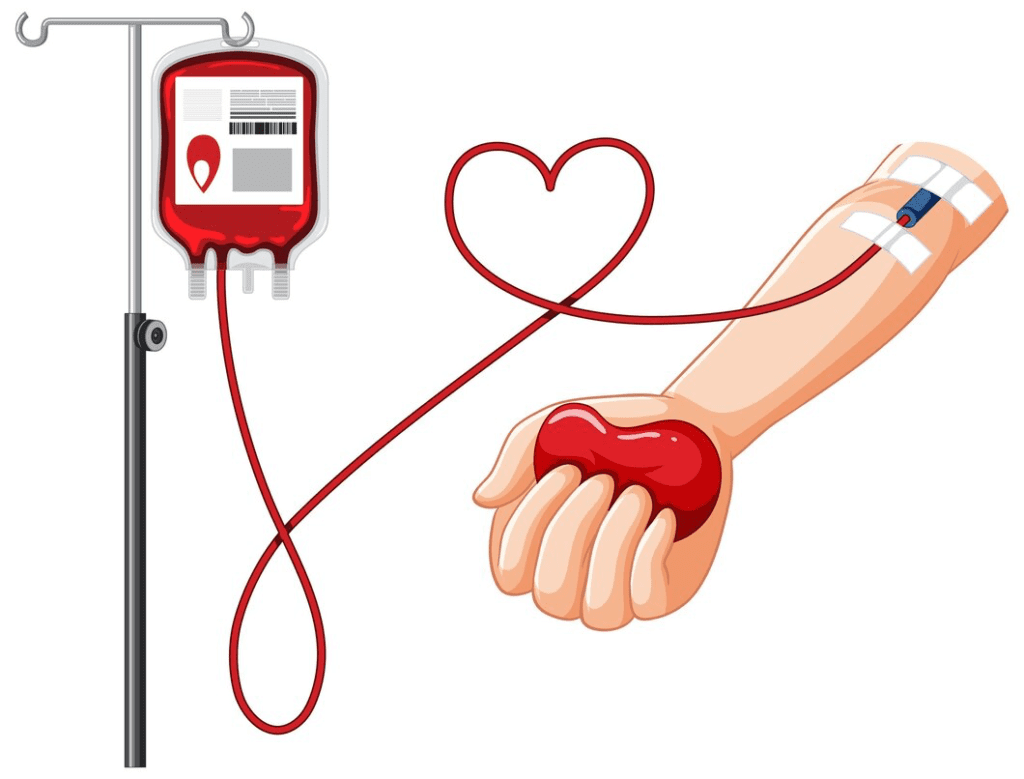
Blood bank is a broad area and hematologists are in constant exposure to this area and in contact with personnel dedicated to studying blood bank medicine. Here are several tests to become familiar with:
- ABO and Rh typing: Determines the blood group of the donor and recipient of blood transfusions based on the presence or absence of A, B, and Rh antigens on red blood cells. It is essential to match compatible blood products to recipients to decrease the risk of transfusion reactions.
- Crossmatching: Involves mixing donor red blood cells with recipient serum (major crossmatch) and recipient red blood cells with donor serum (minor crossmatch) to detect any incompatible reactions. It confirms compatibility between donor and recipient blood products to minimize the risk of transfusion reactions, such as hemolytic transfusion reactions.
- Antibody Screening: Detects irregular antibodies (alloantibodies) in the recipient’s serum that may react with donor red blood cells, leading to transfusion reactions.
- Infection testing: Screens blood samples for infectious agents, including human immunodeficiency virus (HIV), hepatitis B and C viruses (HBV and HCV), syphilis, and human T-lymphotropic virus (HTLV).
- Extended Phenotyping: Involves testing to identify less common blood group antigens beyond the ABO and Rh systems. Extended phenotyping may be necessary for certain patient populations, such as those with multiple red cell alloantibodies or rare blood types, to find compatible blood products. It is recommended to work closely with our blood bank colleagues when suspecting less common antigens and incompatibility.
Many other tests are frequently performed in hematology that we will discuss in the future according to the topics that will be reviewed. We have tried to summarize the most relevant ones to understand in this post. Please, feel free to leave us comments or recommendations on how to improve this post below!
Thank you for reading!
